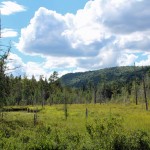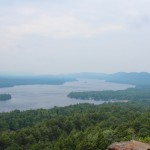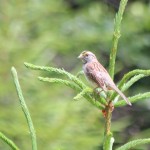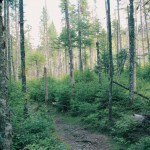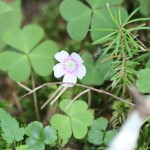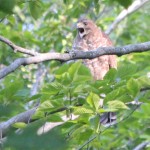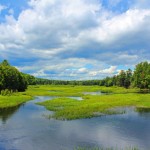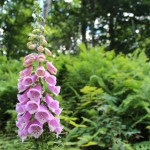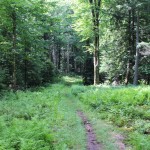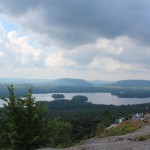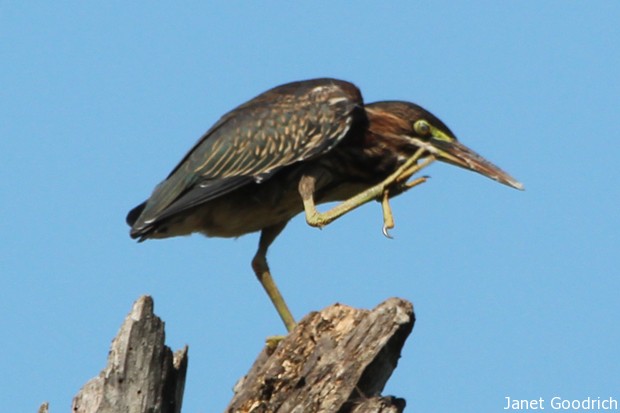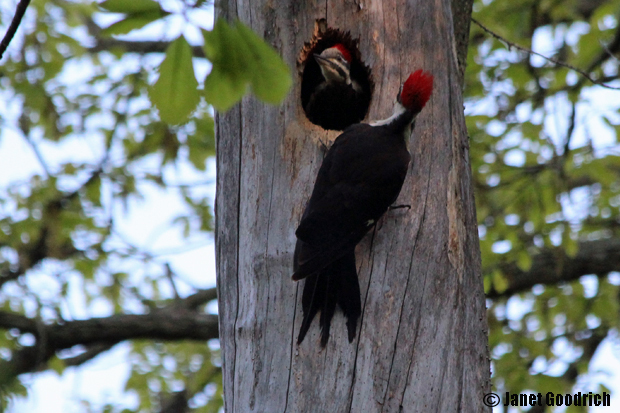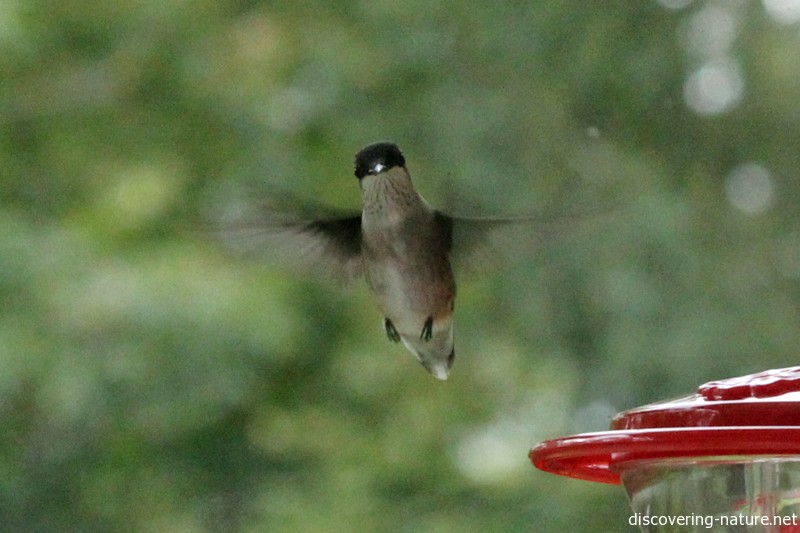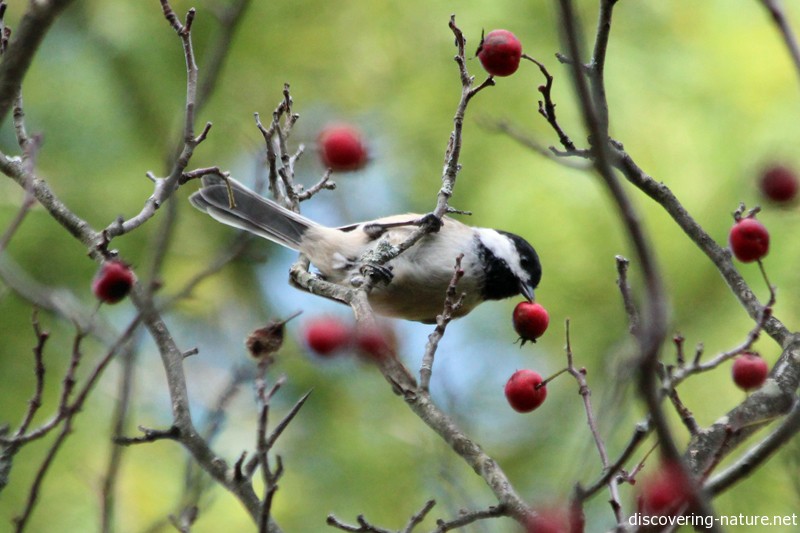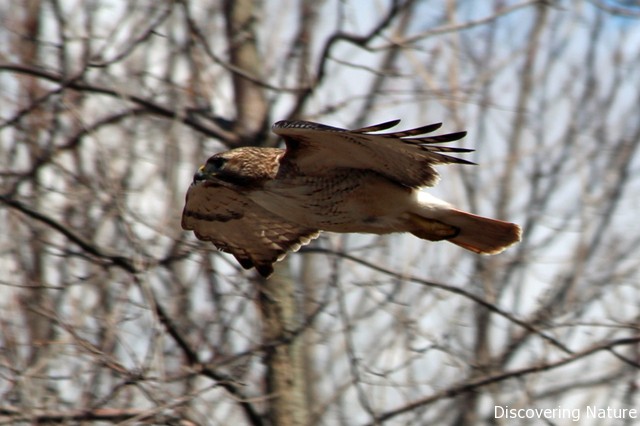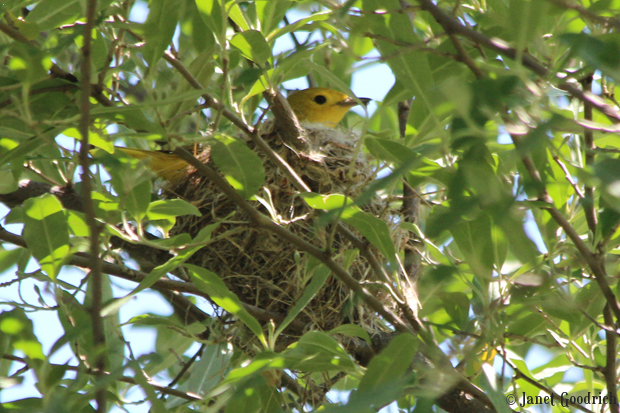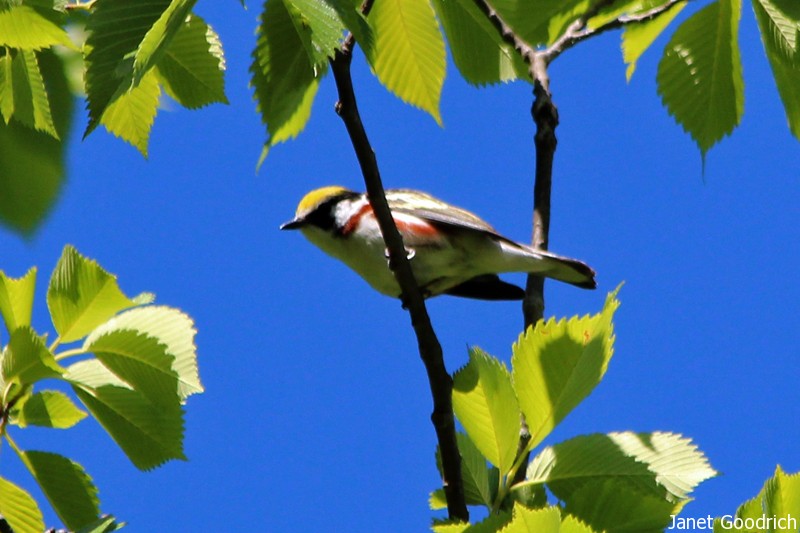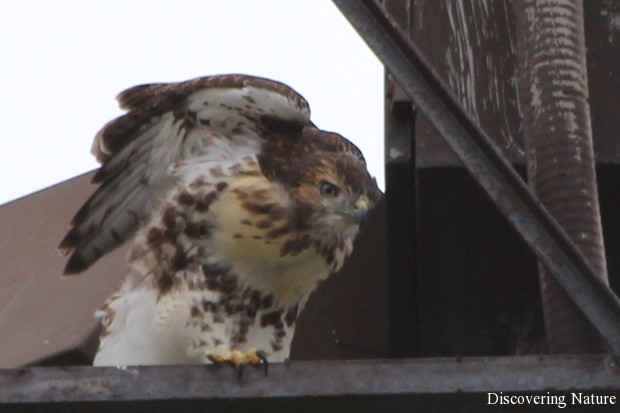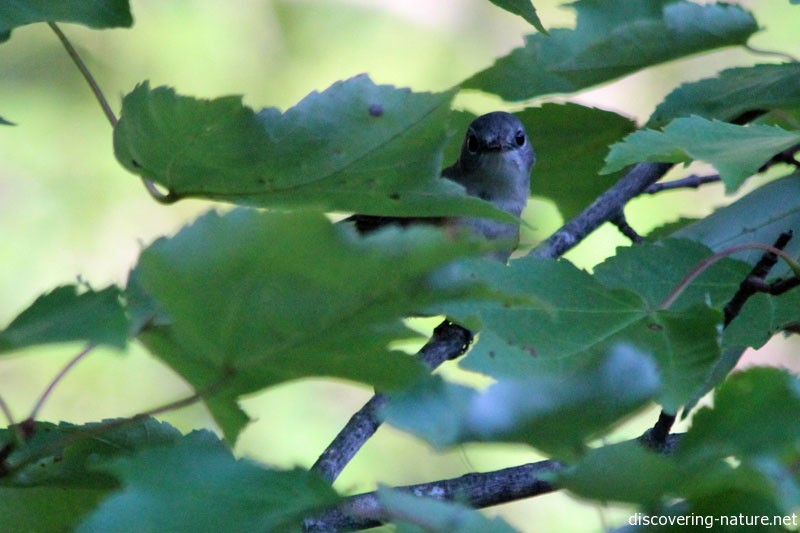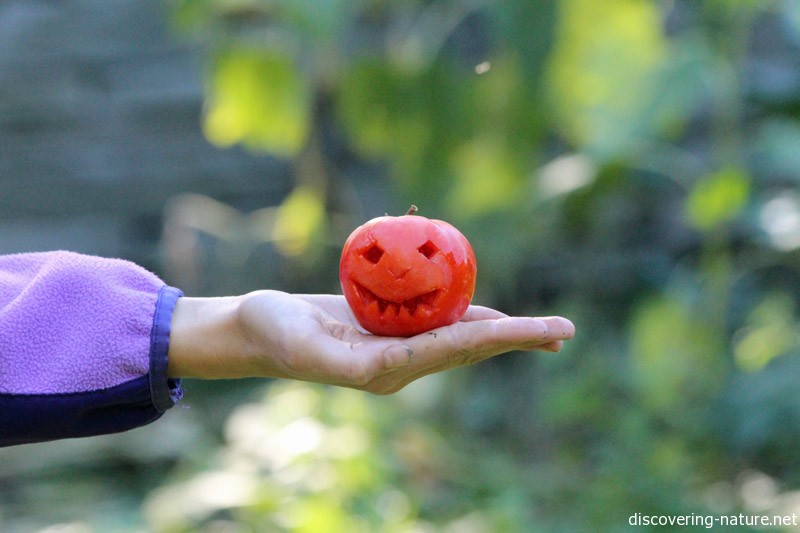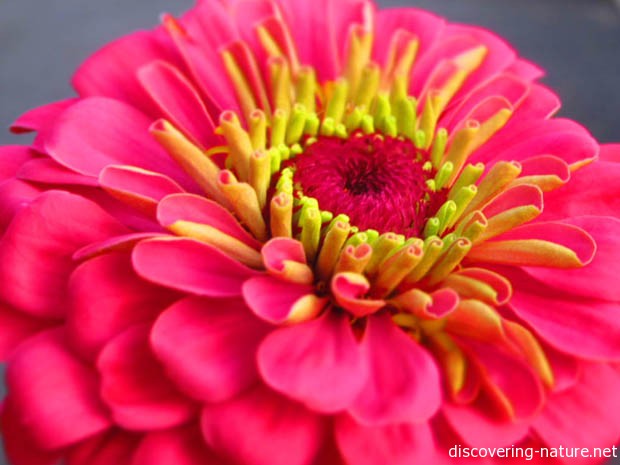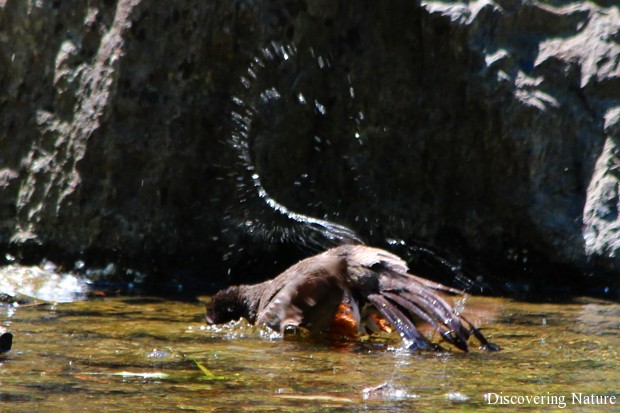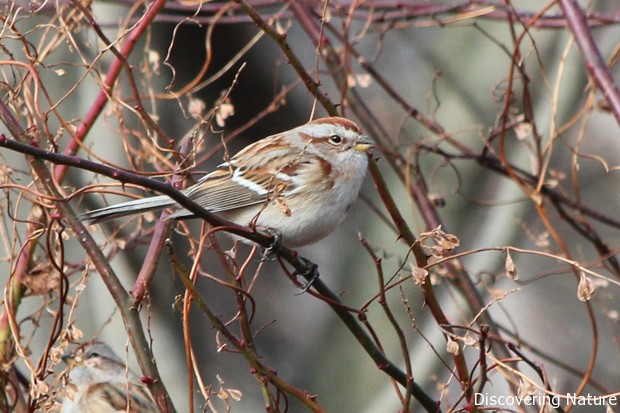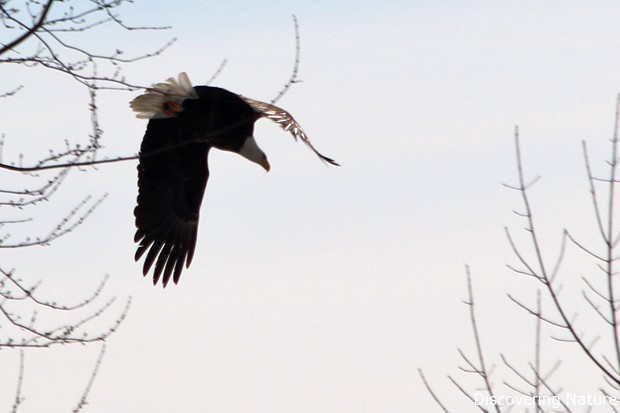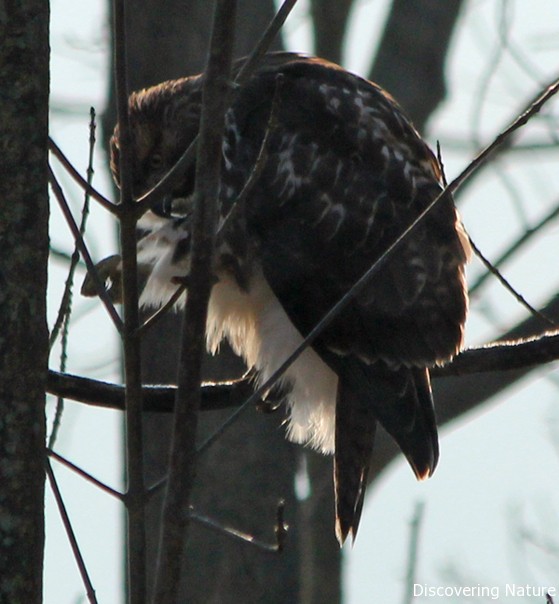Birds
-
Adirondack Album
We visited the Adirondacks in July. Here is just a sampling of the beauties we enjoyed.
Bog Distant haze White-throated sparrow Mystery trail Hidden art Broad-winged hawk Maze Roadside frill Crowded hilltop Mountaintop view -
Spring and fall
It was in the 40’s this morning, and before the fog had cleared, I went for a walk.
It was pretty quiet, and I’d reconciled myself to the likelihood that I wouldn’t see much bird or wildlife activity. But when I reached my favorite hedgerow in the upper meadow, a yellow warbler greeted me.
There was lots of activity there — so much that it was difficult choosing what to focus on, and what to ignore. A catbird got busy tattling on me — “Awake! Fire! Foes! Awake!”
There were several yellowthroats, some of them females and some of them, I think, juveniles. They tried hard to be quiet, but the scolding and rustling weren’t hard to follow.
A blackburnian warbler flitted high up in the treetops. There was a young oriole, too, and a pileated woodpecker I heard but didn’t see. But closer to me were the calls of towhees, and I was tickled to see not one, but two, juveniles.
They seemed as curious about me as I was about them.
Another large, reddish bird scolded me with authority from the bushes, and I wondered if, with its speckled breast and rich cinnamon color, it was a wood thrush. I never did get a great picture, but this one made it clear what kind of bird it was.
A juvenile brown thrasher! Its long tail and yellow eye identified it as a younger version of one of my favorite birds.
This sparrow (I’m not sure what variety — perhaps a song sparrow) looks rumpled like a juvie, but with its beakfull of goodies it may be a mother supplementing her offspring’s diet.
I’d been out for nearly two hours and needed to be getting home, so I started the long walk back to the car, determined not to linger. Head down, walking quickly, I was startled by the sound of thrashing just ahead. It was a doe and two fawns. So that’s the picture I missed — but I have the memory. They melted away into the brush.
It was cool, like the fall, and in fact the fall is near at hand. But the leaves haven’t turned yet, and with all the youngsters I saw it seemed more like spring than fall.
-
Winter Wren
We went back to the Glen early this morning, this time taking the whole family. I knew when I took my husband along that we’d probably see something good. He carries the binoculars and always seems to find whatever we’re looking for.
Today was no exception. But it wasn’t the binoculars that brought the winter wren in close. It was his phone. When we heard our tiny brown friend along the creek bank, my husband brought All About Birds up on his phone and began playing the winter wren’s song. Sure enough, the real wren couldn’t resist the challenge.
He darted in close, looking for his rival and singing.
Normally I like to crop my photos, but not these. For one thing, in the dim light of the shady stream, my photos were grainy. For another, the surroundings help to highlight this bird’s size. He’s a tiny Pavarotti.
The ploy was so successful that another wren higher up in the woods also approached and entered the singing war. But having whipped up the avian passions to such a pitch, we decided to move on and let them go back to their normal routine.
What a treat to see him! You can read more about winter wrens here and here. Apparently if you live on the west coast, your winter wrens sound like the ones in Siberia, but the ones we have around here sound like the ones in England. Just one of the interesting tidbits I’m learning about these extraordinary talents in plain, brown packages.
-
On warblers
At a distance these little birds usually look drab, and the species are hardly distinguishable, but the binoculars show them to be beautifully colored and marked, and wonderfully various in their kinds. There is always something deeply enticing and pleasing to me in the sight of them. Perhaps because I was only dimly aware of them for so long, I always see them at first with a certain unexpectedness, and with the sense of gratitude that one feels for any goodness unearned and almost missed. In their secretive worlds of treetop and undergrowth, they seem among the most remote of the wild creatures. They see little of us, and we see even less of them. I think of them as being aloof somehow from common life. Certain of the most beautiful of them, I am sure, have lived and died for generations in some of our woods without being recognized by a human being. (Wendell Berry, “The Long-Legged House”)

Chestnut-sided warbler -
Rose-breasted grosbeak
I love this guy.
Even though I rarely get a focused picture except when he’s right next to the window, munching seeds and warbling.
It’s my goal this summer: to get a really good picture of Mr. Grosbeak unawares. We have at least two pairs of them in our yard. Hopefully that doubles my chances!
One like this, but in better focus, would make me happy.
-
Tantalizing redstarts
They were darting around in the treetops — flashes of orange and black, fluttering and falling, males clashing over the territory near the river. As much noise as they make with their insistent calls, as colorfully as they flash among the leaves, they never really sit still for pictures. I did get a few fleeting digital glimpses…
The females were more sociable and came close several times. But still, I wasn’t quick enough to capture much.
There were other birds around too… a chestnut-sided warbler…
…a blue-wing, I think:
A warbling vireo:
Some mystery birds:
And the ever-present catbird.
Besides that there were red-eyed vireos singing, and an oriole. But I was preoccupied with trying to see the redstarts.
-
More spring bird sightings
They’re everywhere in the woods, and this is the season not only to hear them, but to see them. And to see them seeing you back.

Ovenbird 
Ovenbird This fellow seemed to want his picture taken…

Chestnut-sided warbler 
Chestnut-sided 
Chestnut-sided 
Chestnut-sided This warbler buzzes rather than sings.

Blue-winged warbler These were a treat to see…

Male blackburnian warbler 
Female blackburnian warbler 
Female blackburnian This guy is a real tattletale — can’t stop chattering when he sees people nearby.

Catbird These next pics are grainy because they’re taken through a window across our yard, but they capture a novel phenomenon. We’ve had several male orioles in different stages of maturity hanging around, eating suet. My only theory is that it’s due to the colder-than-usual spring.

Oriole 
Feeder phenomenon 
Grosbeak and young oriole -
Looking for spring
Spring is really dragging its feet around here. It’s been so cold that there are still bare branches everywhere. But here and there are signs that this too shall pass, and warmth and color are poised to return. Over the past few days I’ve seen the first of the warblers coming through on their way back to the north country, and it cheers my heart.
Yellow-rumped warblers are always among the first wave.
They’re usually accompanied by palm warblers.
I’ve seen a few yellow warblers, too.
Other birds are returning as well. The Eastern towhee has been out and calling for a mate.
A couple of flickers were drumming and calling back and forth in the woods nearby on a recent walk.

Male flicker 
Female flicker A pileated woodpecker was calling for a mate, too.
I’ve heard a couple of brown thrashers making themselves known. They’re favorites of mine, such endless chatterboxes!
The catbirds are back too, but they aren’t making a lot of noise yet. These two hopped silently up from the bushes to where they could examine me.
Those are just a few recent sightings. Of course, there are encouraging signs in the world of flora, too.
Though it’s taking far too long to warm up, I think it’s safe to assume that spring is here.

So long, fall and winter… 
Spring battles through and wins the day! -
Phoebe
-
Morning Birds
We went for a walk at the University nature preserve and saw some ruby-crowned kinglets. There was a winter wren singing in the brush near a creek, a pair of wood ducks, a broad-winged hawk and a kingfisher, along with the other tough birds who’ve been here all winter. (Actually the kingfisher may have stayed — we saw one last year in the dead of winter. This was a colder, longer winter though.) There was one I didn’t recognize: a dark reddish-brown, warbler-sized bird working the ground among the marsh grasses. We also saw what may have been an oven bird, as well as a startled (I think) flicker.
Only a few posed for pictures, of course. But it was a great way to start the day — right around freezing, but with plenty of activity indicating that spring is underway.
There was a whole treetop full of blue jays warning that this hawk was around, though we didn’t realize what was bothering them till he flew overhead.
